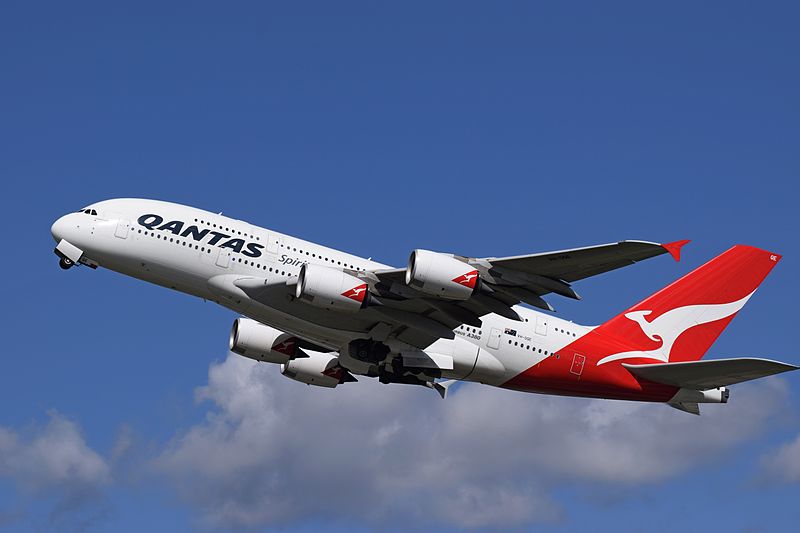This website uses cookies so that we can provide you with the best user experience possible. Cookie information is stored in your browser and performs functions such as recognising you when you return to our website and helping our team to understand which sections of the website you find most interesting and useful.

Qantas is operating the first ever direct A380 flight from Australia to the UK.
The airline is due to suspend all international flights before the end of March due to the coronavirus pandemic, but in the meantime is still flying some scheduled services from Sydney to London.
The flight is one of the Australian carrier’s flagship routes, and normally goes via Singapore.
However, now that Singapore has banned all international travellers, including those simply transiting through the airport, Qantas has been forced to find an alternative.
Its solution is to operate the Sydney-London flight via Darwin in the north of Australia.
The Airbus A380 is travelling the 1,957 miles from Sydney to Darwin to stop and refuel, before continuing on the 8,620-mile journey from Darwin to London.
This second leg of the journey clocks in at just four miles longer than the airline’s current longest A380 flight – Sydney to Dallas – according to One Mile at a Time.
The schedule of the flight sees the Sydney to Darwin leg depart at 5pm and arrive at 9.15pm; refuel in Darwin; and depart Darwin at 11pm, arriving into London at 6.15am (+1 day).
The special route is only operating for the next few days, before Qantas suspends all international flights.
It follows Qantas’s much-vaunted Project Sunrise, which saw the airline operate three direct test flights on a Boeing 787 Dreamliner between Sydney and New York and Sydney and London in 2019.
Aimed at studying the impact the 19-hour, ultra-long-haul journey would have on the human body, the special flights included medical checks for participants, who were fitted with wearable technology.
The airline said: “Scientists and medical experts from the Charles Perkins Centre will monitor sleep patterns, food and beverage consumption, lighting, physical movement and inflight entertainment to assess impact on health, wellbeing and body clock.
“Monash University researchers will work with pilots to record crew melatonin levels before, during and after the flights. Pilots will wear an EEG (electroencephalogram) device that tracks brain wave patterns and monitors alertness.
“The aim is to establish data to assist in building the optimum work and rest pattern for pilots operating long-haul services.”
The flights could launch commercially in 2022 if deemed financially viable.



 Africana55 Radio
Africana55 Radio 

